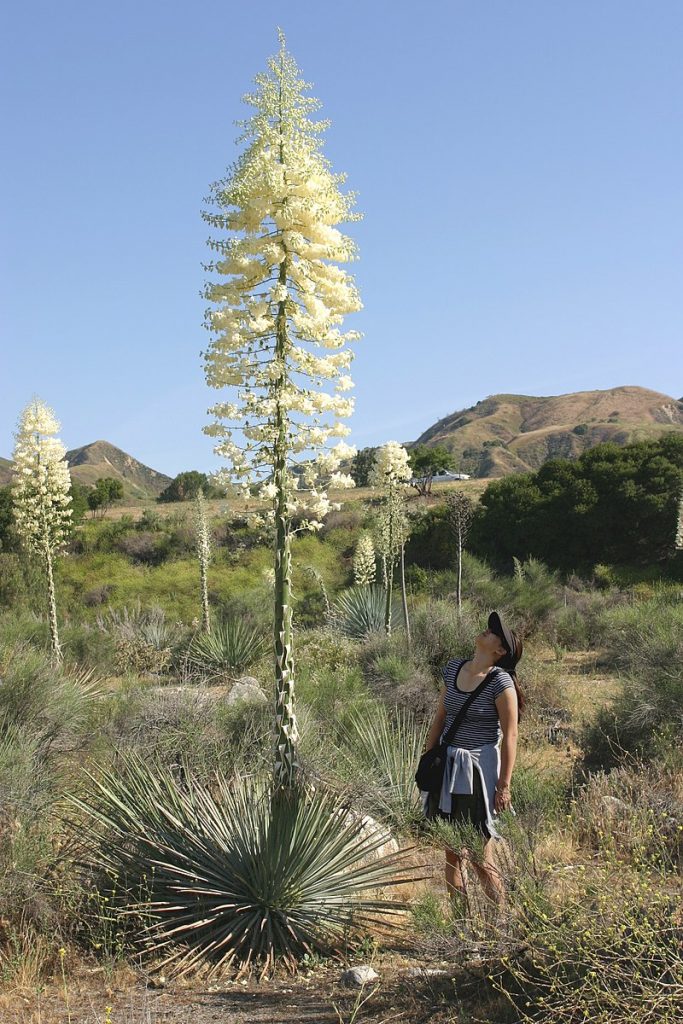
Also known as chaparral yucca, foothill yucca, Spanish bayonet, and Quixote yucca, this evergreen shrub is native to Southern California and Baja California where it grows in chaparral, coastal sage scrub, and oak woodlands. It is a member of the asparagus family, Asparagaceae, that also includes snake plant, spider plant, and agave. The plants forms a 3-4′ tall rosette of rigid, silver-gray leaves with finely saw-toothed margins and very sharp tips. When the plant reaches maturity in 5-10 years, a densely branched spike of flowers 10-15′ tall appears in the course of about 2 weeks in mid spring to summer. The spike bears hundreds of scented, creamy white to purplish, bell-shaped flowers that are pollinated by the California yucca moth (Tegeticula maculata), an exclusive relationship that is considered a classic example of symbiosis. The fertilized flowers produce a dry winged capsule that splits open at maturity to release its seeds. After blooming the plant dies but is replaced by offsets. Our Lords candle is very tolerant of drought, heat and frost, does well in a xeriscape, and is attractive even when not in bloom but may not do well outside its native range. The genus name, Hesperoyucca, comes from the Greek word hesperos meaning western, and the native name, yucca, for the unrelated Manihot. The specific epithet, whipple, honors Amiel Weeks Whipple (1818–1863), a surveyor who oversaw the Pacific Railroad Survey to Los Angeles in 1853.
Type: Evergreen Shrub
Outstanding Features: Foliage, flowers
Form: Fountain
Growth Rate: Moderate
Bloom: Spike of creamy-white to purplish, bell-shaped flowers in mid spring to summer
Size: 3′ H clump with flowering spike 10-15′ H x 2-3′ W
Light: Full sun
Soil: Rocky, dry, well-drained; very drought tolerant
Hardiness: Zones 7-9
Care: Low maintenance
Pests and Diseases: None of significance
Propagation: Seed, offsets
Outstanding Selections: None available
Photo Credit: Wikimedia Commons